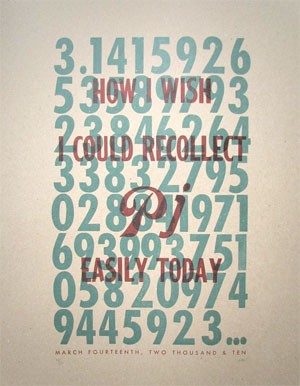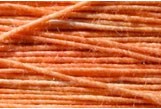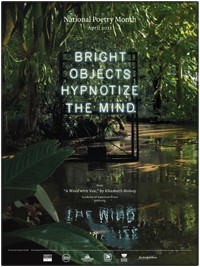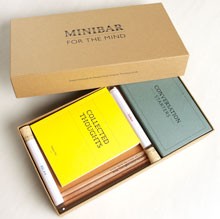 I spent a happy hour the other day paging through the collection of scanned vintage labels, alphabets, coloring books, posters, matchbooks and other ephemera on Agency Eureka. The picture to the left is just one example.
I spent a happy hour the other day paging through the collection of scanned vintage labels, alphabets, coloring books, posters, matchbooks and other ephemera on Agency Eureka. The picture to the left is just one example.
 I spent a happy hour the other day paging through the collection of scanned vintage labels, alphabets, coloring books, posters, matchbooks and other ephemera on Agency Eureka. The picture to the left is just one example.
I spent a happy hour the other day paging through the collection of scanned vintage labels, alphabets, coloring books, posters, matchbooks and other ephemera on Agency Eureka. The picture to the left is just one example.
 For National Poetry Month I’ve been noticing where poetry showed up in every day life. Recently in the New Yorker, Calvin Trillin wrote about pi day and mentioned
For National Poetry Month I’ve been noticing where poetry showed up in every day life. Recently in the New Yorker, Calvin Trillin wrote about pi day and mentioned
There is a form of poetry known as a piem, in which pi’s digits are represented by the number of letters in each word. The best-known piem renders the first fifteen digits of pi as “How I want a drink, alcoholic of course, after the heavy chapters involving quantum mechanics.”
Googling “piem” didn’t get me much, although eventually I found the letterpress poster to the left, by Toronto printer Amanda White.
![]() Maybe people use poetry to remember other things? There are mnemonics to remember lots of facts, for instance “Every Good Boy Deserves Favor” to remember the musical notes in the scale. Googling “mnemonic” I got more poetry to remember the digits of pi and then another term for piem: piphilology.
Maybe people use poetry to remember other things? There are mnemonics to remember lots of facts, for instance “Every Good Boy Deserves Favor” to remember the musical notes in the scale. Googling “mnemonic” I got more poetry to remember the digits of pi and then another term for piem: piphilology.
 Last fall I went looking for my stash of colored linen thread. I never found it (if I had any left, which of course I couldn’t remember!). I only needed a small amount so I ended up coloring white linen thread with acrylic paint and a brush. Then the other day I saw a reference to Heidi Ferguson’s Hand Dyed Linen Thread. Seems much more economical than dying batches of thread myself (however, to do it yourself, here are directions).
Last fall I went looking for my stash of colored linen thread. I never found it (if I had any left, which of course I couldn’t remember!). I only needed a small amount so I ended up coloring white linen thread with acrylic paint and a brush. Then the other day I saw a reference to Heidi Ferguson’s Hand Dyed Linen Thread. Seems much more economical than dying batches of thread myself (however, to do it yourself, here are directions).
 This is the poster for National Poetry Month. Their website has lots of resources — including a map to find out what is happening in your state and a list of 30 ways to celebrate.
This is the poster for National Poetry Month. Their website has lots of resources — including a map to find out what is happening in your state and a list of 30 ways to celebrate.
![]() I thought I’d spend the month seeing where poetry showed up in every day life. In catching up on reading my pile of Poetry Magazines, I found an article by David Orr about the anthology Poetry of the Law: From Chaucer to the Present. The book, to quote Orr, “manages to give the reader a sense of the ways in which contemporary poetry can encompass legal subjects.” So that’s not really poetry in “every day life” but in a subsequent issue, a reader responded to Orr’s article with this letter to the editor
I thought I’d spend the month seeing where poetry showed up in every day life. In catching up on reading my pile of Poetry Magazines, I found an article by David Orr about the anthology Poetry of the Law: From Chaucer to the Present. The book, to quote Orr, “manages to give the reader a sense of the ways in which contemporary poetry can encompass legal subjects.” So that’s not really poetry in “every day life” but in a subsequent issue, a reader responded to Orr’s article with this letter to the editor
In June 2009, Supreme Court Justice David Souter retired to his home in New Hampshire. To mark the occasion, Chief Justice John Roberts read a letter signed by the other members of the Court. “We understand your desire,” the justices said, “to trade white marble for White Mountains, and to return to your land ‘of easy wind and downy flake’ ” — quoting, of course, from (Robert Frost’s) Stopping by Woods on a Snowy Evening… Souter responded, “You have quoted the poet, and I will too, in words that set out the ideal of the life engaged, ‘where love and need are one.’ That phrase accounts for the finest moments of my life on this Court.”
Souter is quoting from Frost’s Two Tramps in Mud Time.
 In order to get herself “making stuff again, ” every day in the month of April, Sarah, over on her blog Anderson Ink, is “going to find or make an ampersand (or two or three) and share it with you.” The other day she made this pretzel — her post has lots of pictures of how to make one for yourself.
In order to get herself “making stuff again, ” every day in the month of April, Sarah, over on her blog Anderson Ink, is “going to find or make an ampersand (or two or three) and share it with you.” The other day she made this pretzel — her post has lots of pictures of how to make one for yourself.
 I’ve always been partial to miniature books — probably because my studio is small and making large books isn’t very practical. So I really liked this little collection called minibar for the mind. It was designed for a hotel, to provide “an intriguing and thought-provoking alternative to the usual minibar fare.” It includes “a box set of 250 cards featuring questions, quotations and provocations to start tongues wagging… An open book and a blank page to write down your dreams and fears… A set of three pencils with quotes from authors Mark Twain, George Orwell, and Laurence Sterne” and more.
I’ve always been partial to miniature books — probably because my studio is small and making large books isn’t very practical. So I really liked this little collection called minibar for the mind. It was designed for a hotel, to provide “an intriguing and thought-provoking alternative to the usual minibar fare.” It includes “a box set of 250 cards featuring questions, quotations and provocations to start tongues wagging… An open book and a blank page to write down your dreams and fears… A set of three pencils with quotes from authors Mark Twain, George Orwell, and Laurence Sterne” and more.